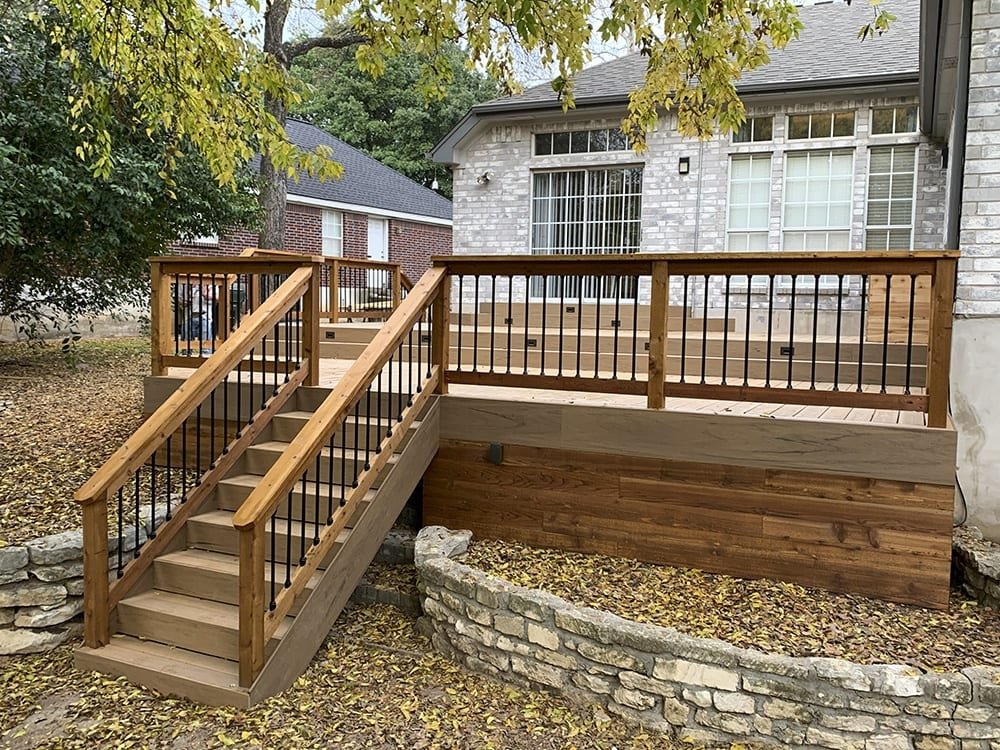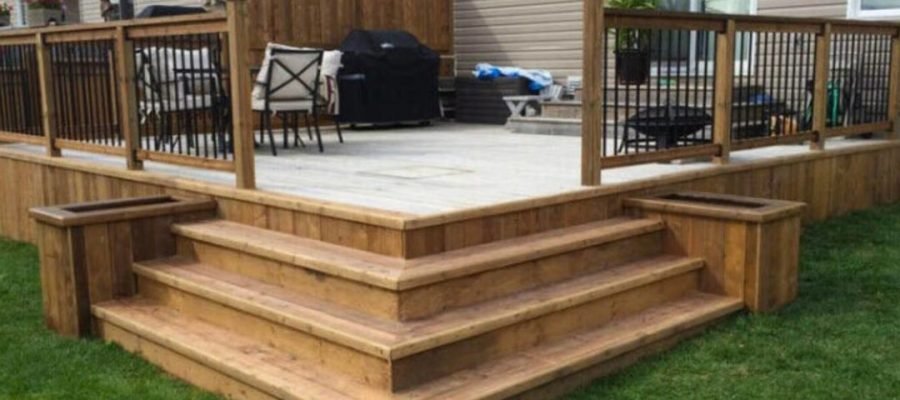How to Clean Decking Naturally: Eco-Friendly…
Discover how to clean decking naturally in Auckland. Use DIY solutions like vinegar & baking…

Curved deck steps can transform your outdoor space, adding a touch of elegance and functionality to your Auckland home. Whether you’re a DIY deck builder in Mount Eden, a property investor sprucing up a North Shore rental, or a landscaper in Papatoetoe planning a backyard oasis, these stylish steps enhance flow and value—potentially boosting your property’s worth by 2–3% in a $1.2 million market, per REINZ June 2025 data. This guide walks you through building curved deck steps, tailored to NZ’s building codes and Auckland’s unique climate, with 1200 mm annual rainfall, per NIWA. For complex or custom designs, My Homes Decking Expert—your local pros at 022 315 8987 or info@myhomesconstruct.co.nz specializes in crafting decks that fit your space and style. Let’s dive into the process and create something stunning!
Curved deck steps aren’t just a design choice—they’re a smart upgrade for your Auckland property.
Why It Works: Curved steps bring personality and practicality—ideal for Auckland’s outdoor living culture.
Proper planning is the foundation of safe, beautiful curved deck steps.
Planning Tip: Measure twice—My Homes Decking Expert offers free site visits to perfect your North Shore design.

Gather these essentials to build curved deck steps that withstand Auckland’s weather.
Tool Tip: Wear safety gear—gloves ($15) and glasses ($10)—to protect against sawdust, per WorkSafe NZ.
Follow these steps to create stunning curved deck steps for your Auckland home.
 Mark and Measure Curve Radius
Mark and Measure Curve Radius Build the Framing Base and Support Posts
Build the Framing Base and Support Posts Cut and Place Curved Stringers
Cut and Place Curved Stringers Attach Riser Boards Securely
Attach Riser Boards Securely Bend and Fasten Tread Boards to Match Curve
Bend and Fasten Tread Boards to Match Curve Add Railings or Side Fascia if Desired
Add Railings or Side Fascia if DesiredStep Tip: Sand edges after cutting—My Homes Decking Expert ensures a smooth finish for North Shore safety.
Make your curved deck steps stand out with these expert insights.
Pro Tip: Seal timber annually with Resene Woodsman ($80/4L)—My Homes Decking Expert includes this in maintenance plans for Papatoetoe decks.
Can I build curved deck steps without a template?
Yes, but a template ensures consistency—freehand cuts risk uneven steps, per DIY feedback. My Homes Decking Expert uses templates for Mount Eden accuracy.
Are curved steps more expensive?
Yes, by 10–20% due to extra labour and materials, costing $1,000–$2,000 more for North Shore builds, per 2025 Builderscrack data. My Homes Decking Expert offers competitive quotes.
What wood is best for curved steps in Auckland’s weather?
H3.2-treated pine ($6/m) or composite ($10/m) resists rot and Auckland’s 1200 mm rainfall, per NIWA. My Homes Decking Expert recommends composites for St Heliers longevity.
Do I need council consent?
Yes, if steps alter structure or exceed 1.5m, per Auckland Unitary Plan 2025—20-day processing applies. My Homes Decking Expert handles permits for Titirangi projects.
How long does it take?
3–5 days for a basic Mount Eden curve, longer (1–2 weeks) for complex North Shore designs. My Homes Decking Expert delivers on time, per client reviews.
Building curved deck steps is a rewarding DIY project that can elevate your Auckland home’s style and value, especially with the right planning and tools. From sketching your radius to securing treads, this guide helps you create safe, stunning steps tailored to NZ building codes and Auckland’s 1200 mm rainfall, per NIWA June 2025 data. Pro tips like using templates and reinforcing supports ensure longevity, making your Mount Eden or North Shore deck a standout. For complex custom builds or to guarantee code compliance, My Homes Decking Expert—reachable at 022 315 8987 or info@myhomesconstruct.co.nz—brings expertise and a 10-year warranty to every project. From subtle curves to full outdoor transformations, we’re Auckland’s decking pros—let’s build your dream deck today!
Discover how to clean decking naturally in Auckland. Use DIY solutions like vinegar & baking…
Kwila Decking for Auckland Homeowners How Long Does Kwila Decking Last? A Comprehensive Guide for…
How to Build a Deck: A Comprehensive Step-by-Step Guide Introduction Did you know that adding…